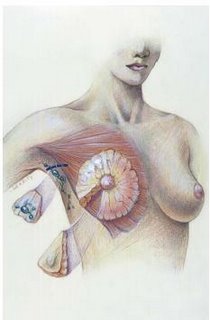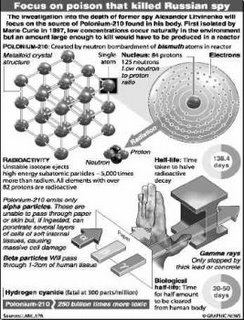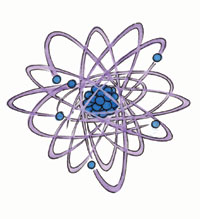Health: Genetic key to some breast cancers found

Genetic key to some breast cancers found
POLLY CURTIS
CANCER SPECIALISTS announced recently that they have discovered a gene, which may hold the key to a treatment for up to 10 per cent of all breast cancers. The development could — in time — lead to treatments that would make chemotherapy unnecessary.
Scientists at the Institute of Cancer Research in the UK have found that one in 10 breast cancers — including many lobular cancers, which are among the hardest to treat and fastest increasing — are linked to an overactive gene called FGFR1.
The gene provides the blueprint for a cancer-fuelling protein. The scientists reported in the journal Clinical Cancer Research that when the gene's activity was blocked, tumour growth was reduced.
First stage of trials
Using a compound targeted at FGFR1, scientists reduced the growth of cells in laboratory tests and are now planning the first stage of clinical trials.
The discovery raises the hope of a `targeted' therapy which could lead to a sophisticated new age of treatments for women who test positive for FGFR1 and spare them chemotherapy, with its devastating side-effects.
Jorge Reis-Filho, of the molecular pathology laboratory at the Breakthrough Breast Cancer Research Centre at the institute, said: "Breast cancer is a complex disease made up of many sub-types. Currently, most breast cancers are treated similarly but we'd like to be able to tailor treatment for each type.
"To do this, it is important that we find new targets for drug development. The discovery of FGFR1 is the first step on the road to tailoring treatment for the 10-15 per cent of women diagnosed with lobular breast cancer.
"The identification of FGFR1 in this sub-group of breast cancers is a very promising finding and although we are a few years away from clinical trials we are moving closer towards our vision of a future free from the fear of breast cancer."
Some 44,000 women are diagnosed with breast cancers every year and 10-15 per cent of those have lobular cancers. FGFR1 is present in half of this subset of cancers, as well as in around 10 per cent of all breast cancers, he said. The research echoes the work that led to the development of the breast cancer drug Herceptin.
Herceptin can be prescribed for women whose cancer is HER2 positive — around 20 per cent of those diagnosed. The FGFR1 discovery, which is similar to the discovery of HER2, could lead to a therapy for women who are diagnosed with breast cancers that are HER2 negative but positive for FGFR1.
Separately, the same scientists are carrying out the first trials of a drug called a PARP inhibitor, which could be beneficial for other women who have a family history of breast cancer and have developed it themselves.
Results promising
The first trial of 50 women is nearing completion, the drugs are not showing signs of toxicity in patients, and the results are "very promising."
"In the future we hope to be able to provide several targeted therapies which will improve survival rates.
"It's an optimistic view and we couldn't say when it would happen, but this is heading in the direction of chemotherapy-free treatments," he said.
The new research comes shortly after a study published in the journal Science recently, which found that a chemical used in the abortion pill also prevented the growth of breast and ovarian cancers. The drug Mifepristone is used to terminate early pregnancies, but by shutting down the hormone progesterone in breast tissue cells, the drug can also prevent tumours from forming. — Guardian Newspapers Limited 2006
Image Source
*********************************************************************************
Tags: breast+cancer genes+breast+cancer treatment+breast+cancer chemotherapy+breast+cancer cancer Institute+of+Cancer+Research latest+cancer+research new+cancer+treatments genetics+cancer
breast+cancer genes+breast+cancer treatment+breast+cancer chemotherapy+breast+cancer cancer Institute+of+Cancer+Research latest+cancer+research new+cancer+treatments genetics+cancer
 Stumble It!
Stumble It!













